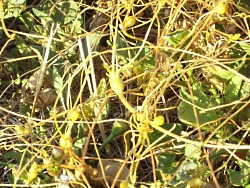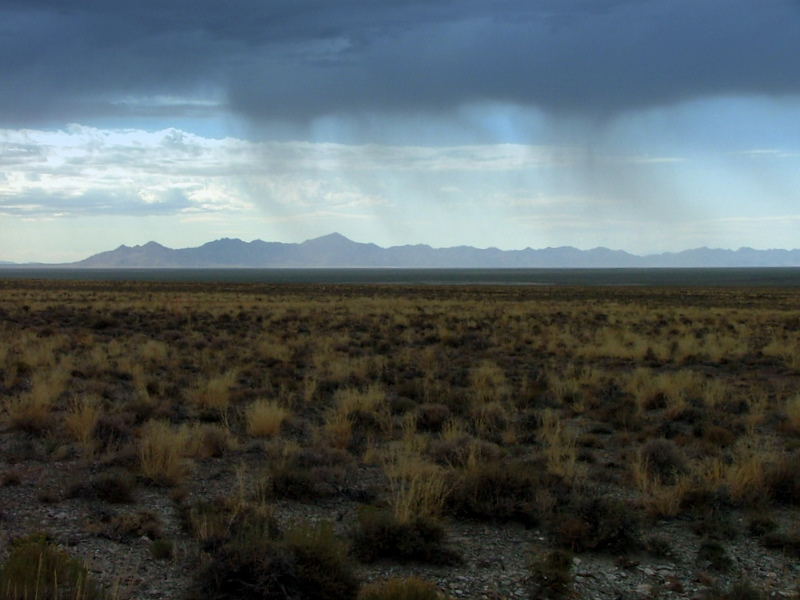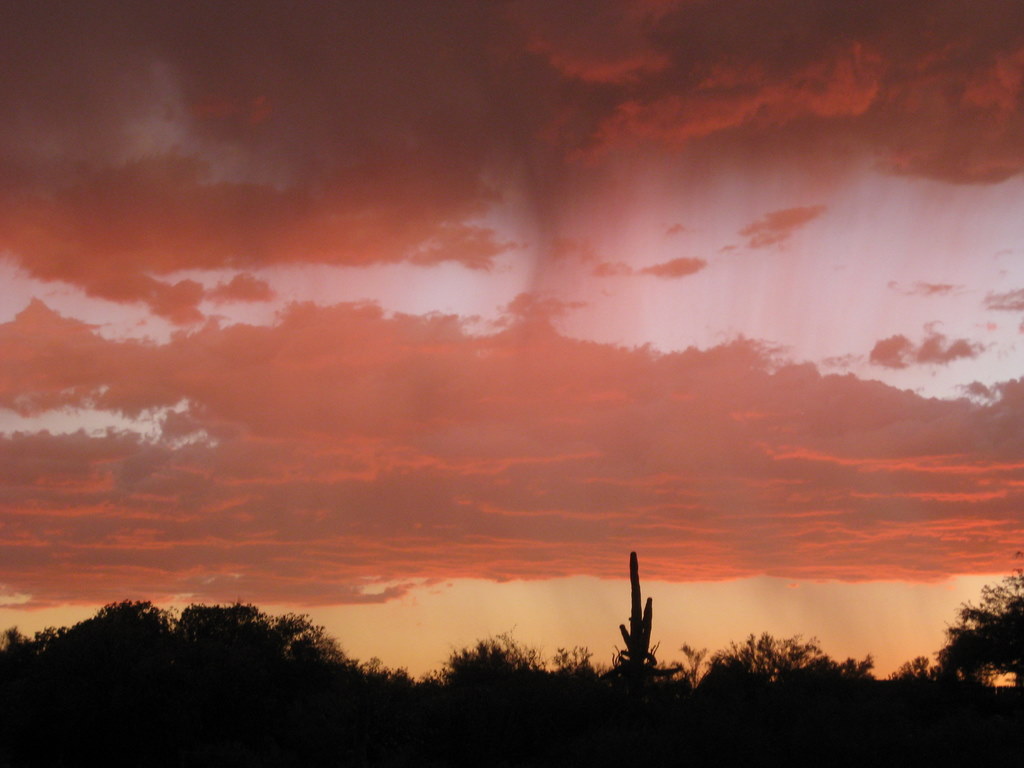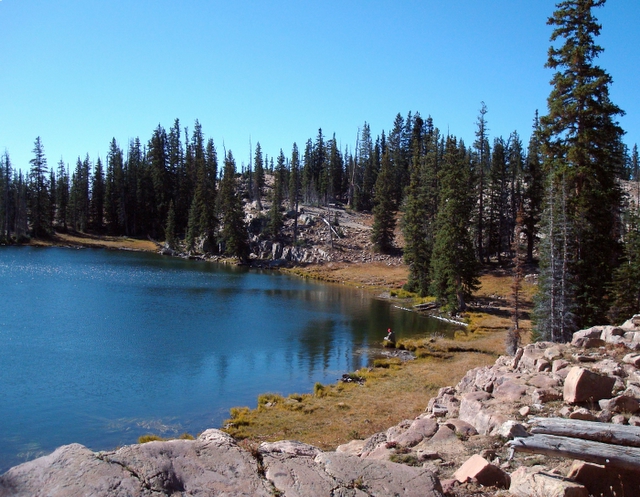
Courtesy & Copyright Jim Cane
Do not mistake dodders for daughters. Parents appreciate a daughter’s hug, but no plant welcomes the embrace of dodder. Dodders are relatives of morning glories and bindweeds. Imagine the despised bindweed minus its leaves and green chlorophyll, just a snarl of twining vine looking like orange spaghetti, and you have a picture of dodder.
Dodders gave up chlorophyll for a parasitic habit. The stem of the seedling dodder actively circles about daily, seeking the scent of a host plant like some botanical bloodhound. It then grows toward its host plant, clambers aboard, and soon abandons its tiny roots altogether.
Bumps along the dodder’s orange stem become haustoria. These organs penetrate the host plant to tap into its phloem. The dodder vine grows prolifically with this pirated flow of sap, smothering the original host and spreading to others. Agriculturally, only the imported alfalfa dodder was a problem, but today we can mechanically separate dodder seeds from alfalfa seeds and so avoid inoculating fields with this parasite.

Courtesy & Copyright 2010 Jim Cane
Utah’s six native dodders attack a range of wild hosts, most commonly relatives of sunflowers. Other kinds of parasitic plants found in Utah include mistletoes, coral roots, broomrapes and the showy Indian paintbrushes. Other than the mistletoes, these are all root parasites. For some, the parasitic habit is merely optional, but for dodder, it is a way of life.
Dodder could be the basis of a botanical horror movie, but fortunately, infestations of dodder are uncommon and ephemeral in the wild, far more benign than some of the diseases and foreign weeds that disrupt our native plant communities.
This is Linda Kervin for Bridgerland Audubon Society.
Credits:

Courtesy & Copyright 2010 L. Bingham
Photos: Courtesy & Copyright Jim Cane
Courtesy & Copyright 2010 Lyle Bingham
Text: Jim Cane, Bridgerland Audubon Society
Additional Reading:
Pest Notes: Dodder, Pests in Gardens and Landscapes, University of California, UC ANR Publication 7496 https://www.ipm.ucdavis.edu/PMG/PESTNOTES/pn7496.html
Integrated pest management for alfalfa hay By University of California Integrated Pest Management Program, ANR Publications, 1981 – Technology & Engineering,
https://books.google.com/books?id=l7e5RvSPhkkC&pg=PA91&lpg=PA91&dq=dodder+#
Pests of landscape trees and shrubs: an integrated pest management guide ,Steve H. Dreistadt, Jack Kelly Clark, ANR Publications, 2004 – Gardening,
https://books.google.com/books?id=NEOLaUHPVdwC&pg=PA334&lpg=PA334&dq=dodder







